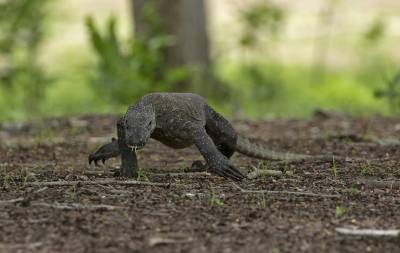My Blog - Jeff Clarke
Updates and photos from around the world on my travels both through pleasure and work
A Sky Full of Egrets

Sky Full of Egrets
All the images in this blog were taken during the trip. Click on an image to display at full size.
In the early hours of the 10th January I stepped aboard MV Boudicca, one of my favourite ships, in the Queensland city of Cairns. It would be the start of an adventure to explore a part of the world with a special appeal. The ship would be making 3 stops in one of the remotest parts of the planet, Papua New Guinea, it would also call in at the equally magical island of Komodo on route to Bali.
As usual I was able to bring a companion along for the ride and on this occasion it was my good friend Laura Dennis, a fellow Ecologist and birder.
We had a few hours ashore in Cairns before the usual speaker responsibilities would kick in, so despite jetlag and no sleep for 36 hours we got up very early and headed off the ship straight after breakfast to an area called Centenary Lakes. This proved most productive and alongside usual suspects like Willie Wagtails and Australian Figbirds we soon found delights like Orange footed Scrubfowl and Brush Turkey, on the passerine front the highlight was possibly a Black Butcherbird dismembering a large green frog, though it would be run close by the likes of Laughing Kookaburra, Helmeted Friarbird, a Horsefield’s Bronze Cuckoo, Nutmeg Manakin and White breasted Wood-swallow.
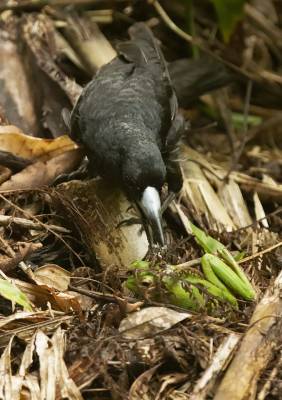

Black Butcherbird (left) & Helmeted Friarbird © Jeff Clarke
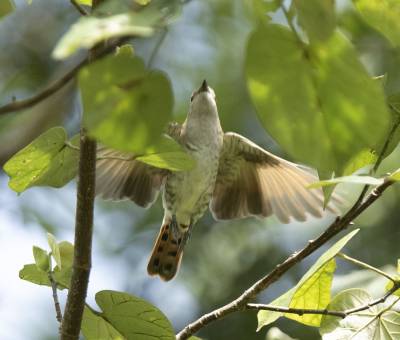

Horsefield's Bronze Cuckoo © Jeff Clarke
The waterbirds around the lakes included Pacific Black Duck, Rajah Shelduck and Royal Spoonbills as well as the expected Australian White Ibis, Little Black Cormorant and Australian Darter.

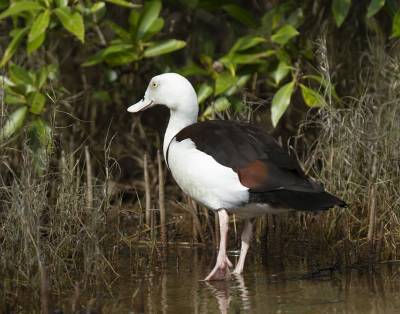
Pacific Black Duck (left) & Rajah Shelduck © Jeff Clarke
We returned to the ship to meet up with Border Force Officials and then had another productive hour’s stroll along the esplanade close to the cruise terminal. This gave excellent views of Varied and Brown Honeyeaters, Torresian Imperial Pigeon and Peaceful Dove.
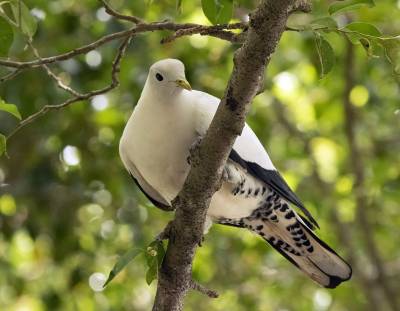
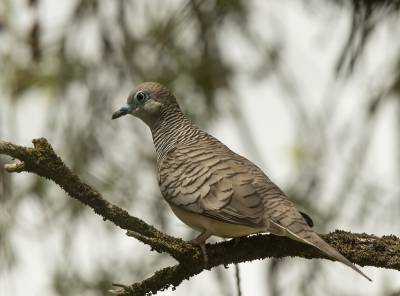
Torresian Pied Imperial Pigeon(left) & Helmeted Friarbird © Jeff Clarke
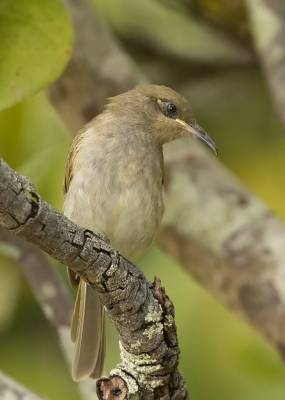

Brown Honeyeater (left) & Varied Honeyeater © Jeff Clarke
On the shoreline we found a very close flock of ‘bathing’ Australian White Pelicans, accompanied by Great Egrets, Eastern Reef Egret and Bar-tailed Godwits. The sand here was pock-marked with the small holes created by a myriad of Fiddler Crabs.

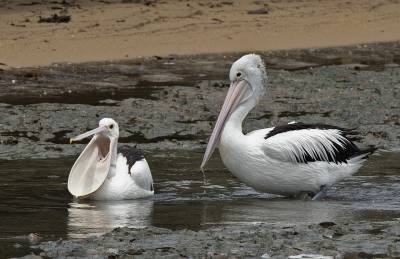
Eastern Reef Egret (left) & Australian White Pelicans © Jeff Clarke
Before long we were back aboard Boudicca for the Entertainers Meeting and familiarising ourselves with the layout of the ship, mainly for Laura’s benefit.
All too soon we departed Cairns and Crested Terns marked our passage out of the harbour. Once out in the open ocean we soon began picking up seabirds, with Wedge-tailed Shearwaters dominating, alongside Sooty and Bridled Terns.
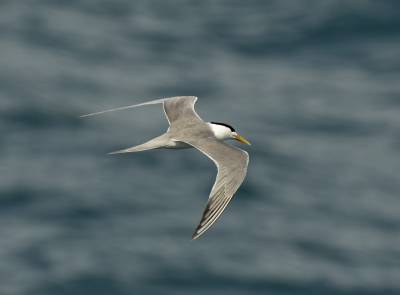
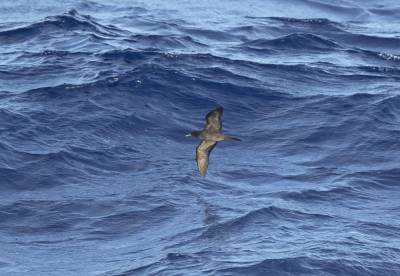
Crested Tern (left) Wedge-tailed Shearwater (dark phase) © Jeff Clarke
We would have a full day at sea before reaching PNG. Disappointingly this produced little, though we were attended by Masked Booby and Red-footed Booby, and some 50+ Wedge-tailed Shearwaters passed by. Sadly, the very choppy sea made cetacean spotting nearly impossible.
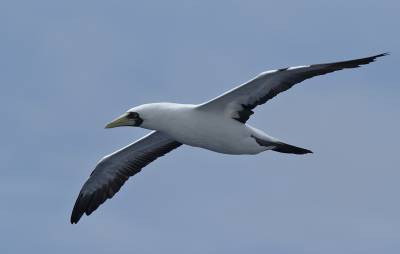
Masked Booby adult © Jeff Clarke
On the 12th I achieved the long-held ambition of reaching Papua New Guinea, we had struggled to arrange our own guided tour in Alotau, so we did a ship tour of the Tawali Remote Dive site, to snorkel on a reef. This was a really enjoyable tour. The dive site required a drive through a fascinating heavily vegetated landscape, with occasional small wooden buildings on stilts appearing nestled within the forest. Our boat ride to the dive site gave us superb views of swarming Black Noddy Terns, in the company of Lesser Frigatebirds.
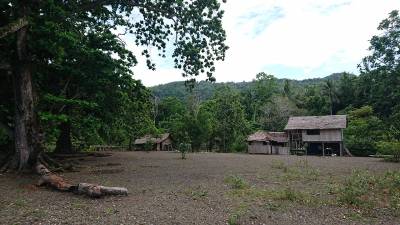
PNG village near Tawali Wilderness Dive location © Jeff Clarke
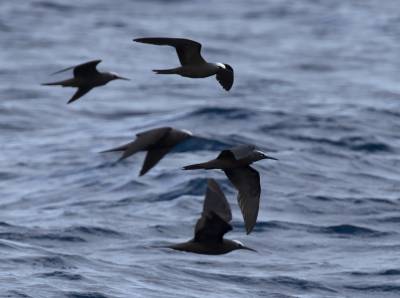
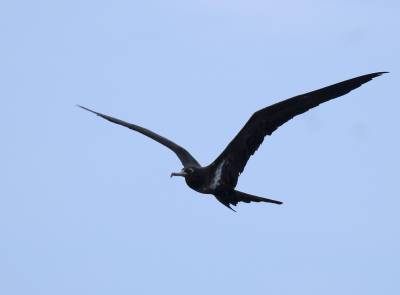
Black Noddy Terns (left) Lesser Frigatebird male © Jeff Clarke
The reef dive was very enjoyable, with memorable clouds of damsel fish species. The reef was in good condition and as you passed over it, huge blue, sausage-armed, starfish would decorate the already colourful reef.


Snorkelling & Damselfish sp on Horseshoe Reef PNG © Jeff Clarke
After our dive walked through the forest to enjoy a waterfall and in particular the Skull Caves, the last victim of the cannibalistic past being as recently as the 1950’s, according to the local guide. A somewhat macabre introduction to this infamous aspect of PNG culture. Our return boat trip produced our first Spinner Dolphins of the trip.
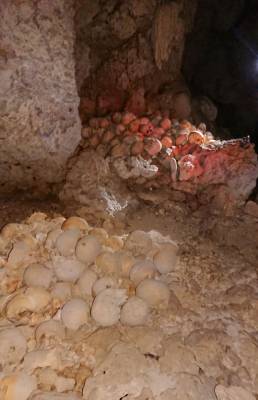
Skull Caves near Alotau PNG © Jeff Clarke
On our return to the ship we could see a number of wading birds resting on an adjacent building roof. Close examination revealed them to be Pacific Golden Plovers, Grey-tailed and Wandering Tatlers as well as a few Common Sandpipers. It was very hot and the heat haze made getting decent photographs nearly impossible.
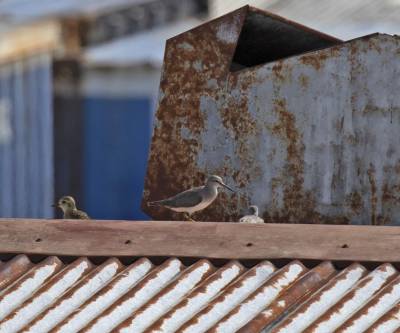
Grey-tailed Tatlers and Pacific Golden Plovers on dockside roof Alotau © Jeff Clarke
The following sea day produce very little, though a Tahiti Petrel was a nice find. We arrived in Madang 14th January, Black Kites greeted the ship in the harbour along with the tribal dancers and some Pacific Swallows. This was where Laura and I had arranged to meet our guide ‘Kaut’ who would take us into the forest in search of Birds of Paradise.

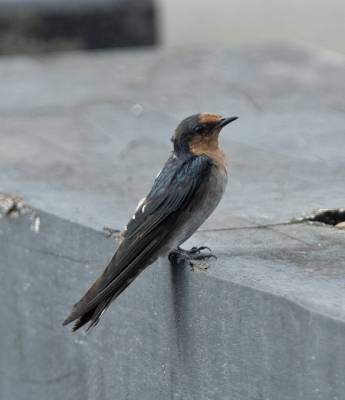
Black Kite over Boudicca in Madang harbour © Jeff Clarke
Spoiler Alert! We didn’t see any, but we did hear two different species at very close quarters, namely Lesser Bird of Paradise and King Bird of Paradise. We just couldn’t see them in the dense forest vegetation. You really need to be on site at dawn and this is rarely an option on a cruise. Nevertheless, we had a great time on this trip.
Just about every bit of land in PNG is owned by someone, you cannot just go blundering off into the forest, apart from which you’d get thoroughly lost very quickly. We were on land owned by a very nice fella called Ken. He and his brother could not have been more accommodating, including showing us a demonstration of their beetle nut harvesting and use. Hence everyone’s red teeth in PNG.
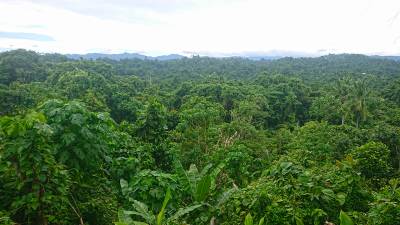

Madang Forest overlook & Our group Me, Laura, Ken, Liz, Kaut and Gary in the forest © Jeff Clarke
Forest birding is a challenge at the best of times but trying to find birds in the middle part of the day is a true challenge and the rewards are often limited, but we did see or hear Yellow-faced Myna, White-bellied Cuckoo Shrike, Orange-bellied Fruit Dove, Brahminy Kite, Whistling Kite, Sulphur Crested Cockatoos, Helmeted Friarbird, Hooded Butcherbird and Golden Monarch. Latterly we visited a nearby resort where a Forest Kingfisher proved cooperative.
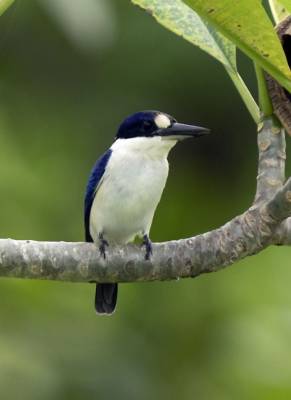
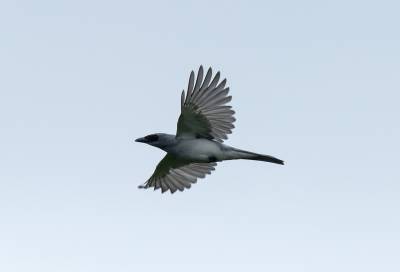
Forest Kingfisher (left) & White-bellied Cuckoo Shrike © Jeff Clarke
Back at the ship the local youngsters had surrounded the vessel with their dugout canoes and were having a high old time. Just metres from where they were cavorting 3 fins cut the surface of the water. As the dolphins became more active they revealed their identity as Indo-pacific Bottlenose Dolphins. Pretty soon we were back out in the open ocean on our way to Wewak and joined by the coastal hugging Black Noddys and further out Wedge-tailed Shearwaters came to the party.
Wewak was an experience. Not all of it in a good way. Laura and I were trailed for 4 hours by a young fella, probably in his twenties. We were going to find somewhere to snorkel but never found anywhere safe where we could leave our kit. The guy was clearly known to the locals as untrustworthy, for instance when we entered a shop the proprietor chased him out. We finally lost him in the Market, which by the way was brilliant. Highly recommend a visit to this location but take PNG currency as they can’t change US or Aus dollars. Also take the complimentary shuttle bus or hire a trustworthy guide.
The 16th was a full day at sea and the birds proved pretty varied. By far the commonest bird was Streaked Shearwater with at least 800+ seen. 2 more Tahiti Petrels were probably the highlight. As so often the big-ticket item of the day was seen while I was giving a talk. A Whale Shark went down the side of the ship, it’s uncanny and absolutely typical that this kind of thing happens when I’m speaking. From a photographic perspective only the Brown Boobys disported themselves.

Brown Booby sub-adult © Jeff Clarke
The following two sea days were deeply frustrating from a wildlife perspective, we were out over very deep water most of the time with the drop-off zone of the continental shelf 20 plus miles to our west. As a result sightings were limited though we did have some highlights, in the shape of White-tailed tropicbird, close fly-by Lesser Frigatebirds, hordes of Phalaropes, almost all of which, when seen well, proving to be Red-necked Phalarope. A Red-footed Booby of the white-tailed form delighted passengers by repeatedly flying around the ship for an hour, giving very close views before it finally landed on the point of the bow. When it landed we realised it had a damaged left wing, this may have occurred as it chased one of the many Flying fish we were disturbing. The standout highlight of the 18th was an Abbott’s Booby, unfortunately it waited till late dusk to float by the ship on a log.
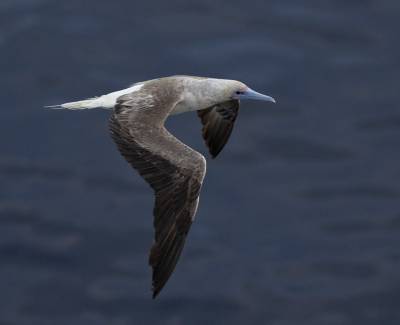
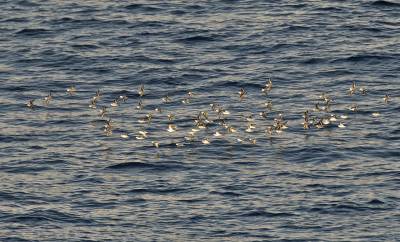
Red-footed Booby - white tailed form (left) & Red-necked Phalaropes © Jeff Clarke
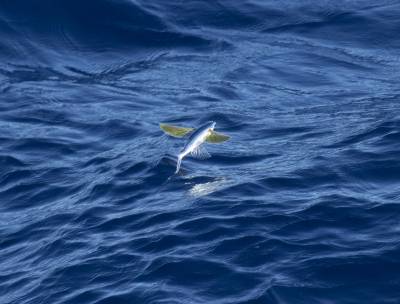
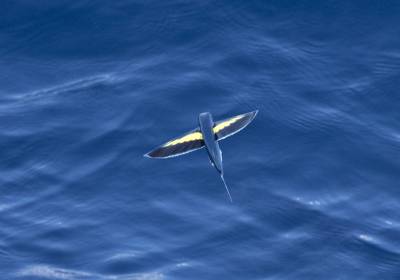
Cheilopogon spp of flying fish off West Papua © Jeff Clarke
On the 19th we arrived in Ambon Island in Indonesia. We decided to grab a taxi and head up to the village of Soya. We knew there was a forest walk there. We had a brilliant time. We walked along forest trails for 3 hours and never saw another soul. Lots of birds present but in the thick forest in the middle of the day few showed well. Black Sunbirds were the commonest canopy species and a pair of Claret breasted Fruit Dove’s showed well, if distantly. Metallic and Moluccan Starling’s were present as were Drongo Starlings. However, the stand-out avian feature of the day was undoubtedly the thousands of Glossy Swiftlets flitting though the sunlit canopy like hordes of foraging bats. A quite fascinating spectacle, getting photographs of them was an altogether more challenging experience. This was a location where I wished I’d had a butterfly guide with me. The island was seething with stunning butterflies and I couldn’t ID any of them. Most frustrating. Luckily the Common Asian Toad was more readily determined. Very attractive as toad’s go!

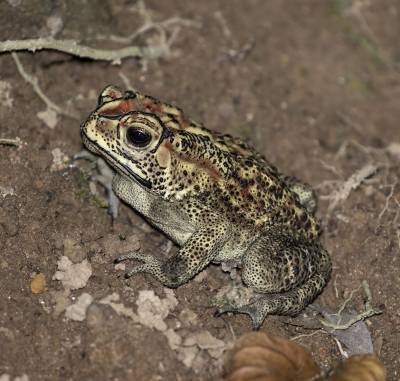
Claret-breasted Fruit Dove (left) & Asian Common Toad © Jeff Clarke
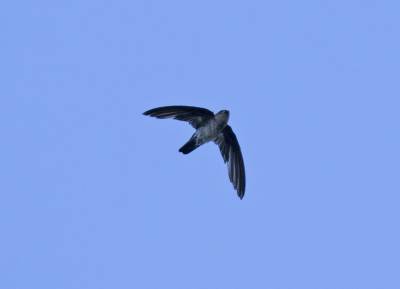
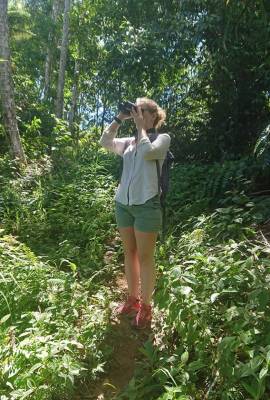
Glossy Swiftlet & Laura watching the swiftlets on Ambon Island © Jeff Clarke
When we got back to the ship I was alerted to the presence of a stranded Streaked Shearwater by ‘Ingvar the Viking’, a delightful Swedish birder I’d previously met on Breamar as we travelled up the Amazon. Once we were a good distance out to sea I retrieved the bird from its hidey hole. I could only get one hand to the bird and I knew the bird would take its revenge as I extracted it. One bloodied hand later I’d secured the bird and after showing the passengers the distinctive features of a ‘tubenose’ I released the bird overboard and it flew away strongly.

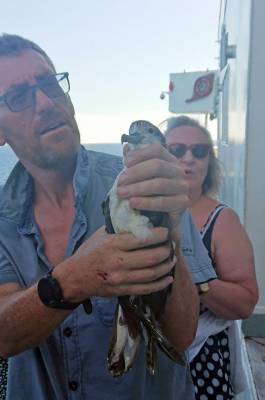
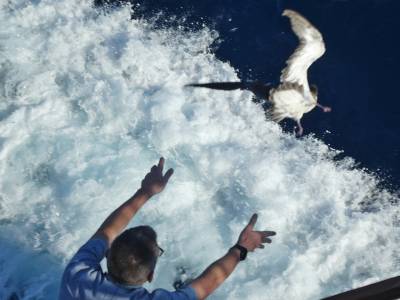
Streaked Shearwater recsue and release sequence © Jeff Clarke
The 20th was another day at sea and probably our best for cetaceans. We had a distant pod of small ‘Blackfish’ either Melon-heads or Pygmy killers, but the distance was too great for certainty, though I favoured the latter. Late in the day we had a nice mixed pod of Spinner and Pan-tropical Spotted Dolphins. The 3 Sperm Whales were too far from the ship for any photographs, but passengers were delighted to see them anyway.
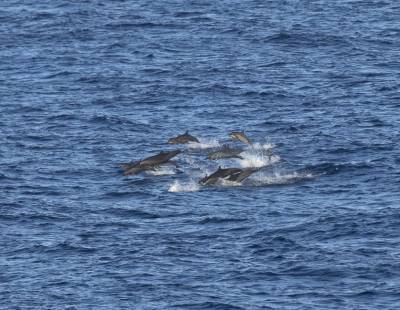
Dwarf Spinner and Pan-tropical Spotted Dolphins in mixed pod © Jeff Clarke
Birdwise the sheer number of Red-footed Boobys, over 400, was a day long spectacle, with all the colour forms on display, though the white form dominated.
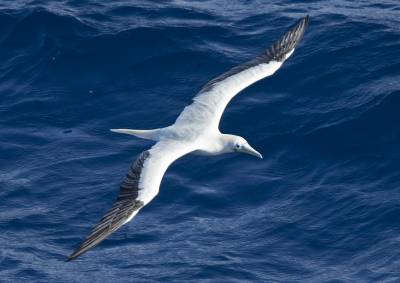
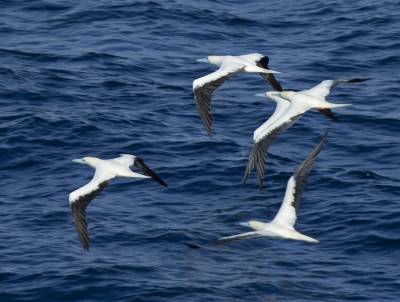
Red-footed Booby's of the White form© Jeff Clarke
The 21st saw my return to Komodo Island, but this was Laura’s first visit. The big draw is of course is the legendary Komodo Dragon. They are not hard to see under guidance, but you need a guard with you. Most of the dragons you see are hot and lazy, but the guards carry forked sticks for very good reason.
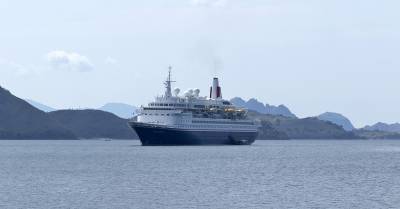
Boudicca at Anchor off Komodo Island © Jeff Clarke
On my last visit I’d failed to capture the image of a dragon drooling. I had more luck this time. It’s pretty much the quintessential image of a Komodo Dragon. That drool is full of toxic bacteria. A very good reason not to get bitten by one. Luckily, they spend most of their time predating the wild Boar and abundant Timor Deer. I don’t think we lost any passengers that day!
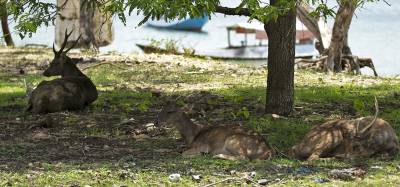
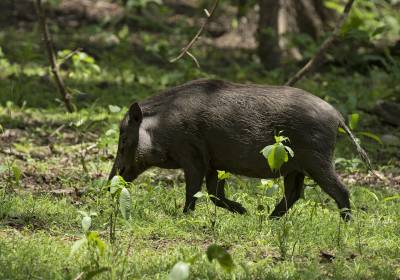
Timor deer and Wild Pig on Komodo Island © Jeff Clarke

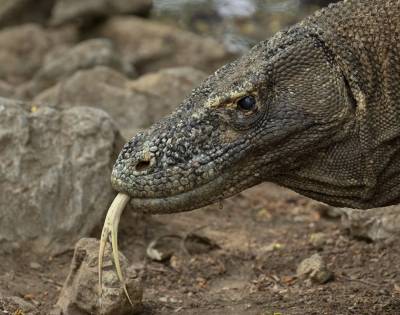
Komodo Dragons on Komodo Island January 2020 © Jeff Clarke
We did manage to see a few birds on this visit, including Black Drongo’s, Helmeted Friarbirds, Green Imperial Pigeon and Eastern crowned Warbler.
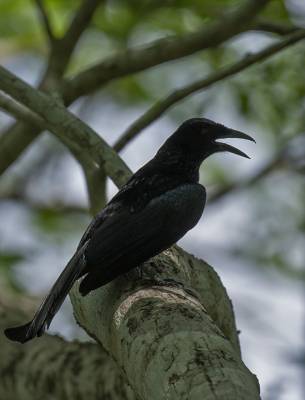
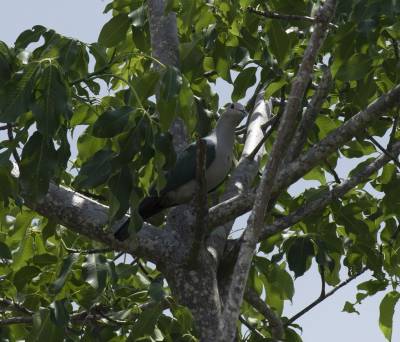
Black Drongo and Green Imperial Pigeon on Komodo Island © Jeff Clarke
The bit of the trip I was most looking forward to was snorkelling on Pink Beach. I’d been extolling its virtues to Laura and we were not to be disappointed. It was truly spectacular, but unfortunately my Go-Pro developed a glitch and failed to capture the action.
As we prepared to leave Komodo I had passengers lined up ready for the dolphins. Just as we weighed anchor a White-bellied Sea Eagle and a Brahminy Kite came in for a close-up. A promising start. Thankfully the Spinners came in for a joyous cavort smack-bang in front of the ship right on cue. Sadly, we never reached the best area before the dusk fell like a hammer. Frustrating, as we were just hitting the motherload of shearwaters and where there are masses of birds there are usually cetaceans.
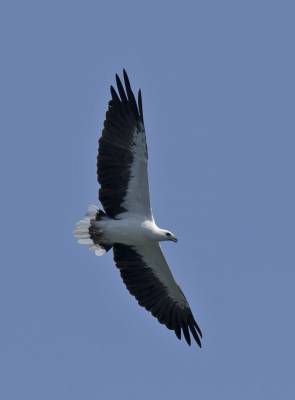
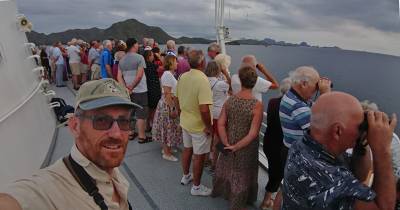
White-bellied Sea Eagle over Komodo Island & Dolphin Watchers gathered on Boudicca, Komodo 2020 © Jeff Clarke
On the 22nd we arrived in Bali and took a taxi out to some natural areas in the afternoon. We couldn’t get access to our first-choice area so we ended up at a mangrove reserve, and it was Egret city. Everywhere you looked Egrets were flying about: Eastern Cattle Egret; Intermediate; Great; and Little Egrets. In the mangrove area itself we found Chinese Pond Heron and latterly as dusk fell streams of Night Herons flew over. There were also masses of Blue-tailed Bee-eaters passing over. One of the main features of the mangrove area were the Whimbrel. There were heaps of them and many of them were, rather unexpectedly, perching and flying out of the mangroves themselves.

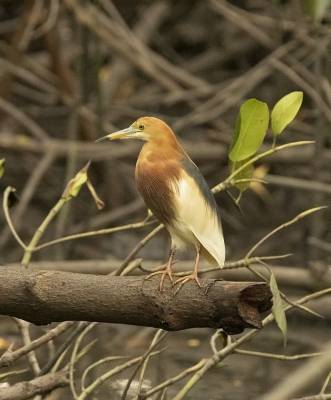
Eastern Cattle Egret & Chinese Pond Heron © Jeff Clarke
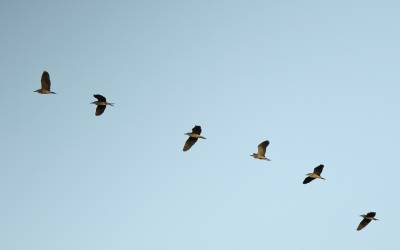
Black-crowned Night Herons © Jeff Clarke
On our final day we were effectively stuck on the ship waiting for transfer to the airport. I rescued a Red-legged Crake from deck 8. It had a broken leg so probably didn’t survive.
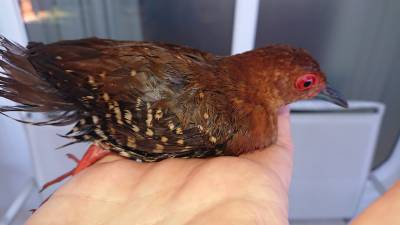
Red legged Crake on Boudicca, Bali 2020 © Jeff Clarke
I was a very memorable trip, but it was also a case of so near yet so far. If we had spent longer on the shelf break, our oceanic seabird and cetacean list would have been far more diverse.
Finally I just need to thank those who made the trip possible and enjoyable, Fred Olsen Cruise Lines and the crew and staff of MV Boudicca as well as the delightful passengers and fellow entertainers; my agents Peel Talent and my companion Laura for all the laughs and inspired answers at the nightly quiz.


